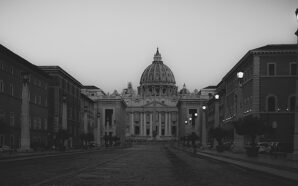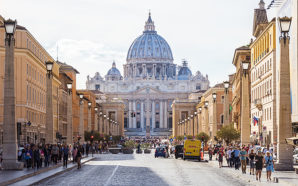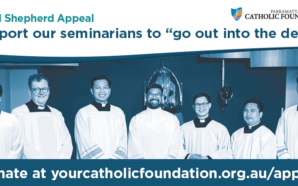Around half (51%) of all Australian Catholic parishes are multicultural. Latest survey results released from the National Church Life Survey highlight that culturally diverse parishes are significantly more common in the Catholic Church compared with other Christian denominations.
“Australia is a multicultural nation, and has among the highest proportions of multicultural local churches in the world. Our latest estimates are that 23% of all Australian Christian local churches can be defined as multicultural, based on the country of birth of church attenders”, noted Dr Ruth Powell, Director of NCLS Research.
“This is much higher than the USA, where multicultural churches are only around 14% of all churches. It is against this background that the extremely high figures for Catholic parishes really stand out.”
A challenge to consider culture, ethnicity and race
Dr Powell said “While cultural diversity in churches is a strength, it is critical that both church leaders and scholars continue to engage with underlying systemic issues, including the importance of diverse leadership.”
New research on cultural diversity in churches was released at recent events, co-hosted by NCLS Research and the Australian Catholic University, featuring visiting scholar from the United States, Dr Korie Edwards. Dr Edwards challenged colleagues from diverse religious organisations to distinguish between ideas of culture, ethnicity and race. A leading scholar of race and religion, Dr Edwards heads a national study of multiracial church pastors called The Religious Leadership and Diversity Project (www.rldp.net) in the USA, the most in-depth, comprehensive project conducted on leaders of multiracial congregations and is also President of the Society for the Scientific Study of Religion.
Fast Facts about Australian churchgoers:
- 36% were born overseas, 27% were born in a non-English speaking country
- 22% speak English plus other language(s) at home, 3% speak other language(s) only at home
- 60% were female, 40% were male
- 13% were aged 15-29, 24% aged 30-49, 34% aged 50-69, and 29% aged 70 and over
- 37% held a university degree, 25% had a trade certificate/diploma/ associate diploma,
38% had primary or high schooling - 49% were employed, 8% had full time home duties, and 36% were retired
Source: 2016 National Church Life Survey, Attender survey (n=189,751 church attenders aged 15 years and over) http://2016ncls.org.au
Research event into cultural diversity and churches
A research colloquium on March 14, brought together scholars interested in ethnicity and religion and highlighted 2016 National Church Life Survey datasets available for future analysis. “Survey forms were provided in 10 different languages and our datasets now have around 80, 000 church attenders born outside of Australia, including 56,000 respondents from non-English-speaking backgrounds,” said Dr Powell. “We hope to stimulate new research among scholars and students in the field of cultural diversity and churches.”
To foster community engagement, a church leader workshop was held on Harmony Day, March 21, and was attended by church leaders from both Catholic and Protestant churches, representing various cultural backgrounds. In addition to keynote addresses about the latest research, participants joined roundtable discussions to explore the role of the ‘safe spaces’ that mono-ethnic churches can create, tips to transition to being a multicultural church, and different models of diverse church life used across denominations.
A multicultural church
It was shown from the 2016 National Church Life Survey results, that more than a third of Australian church attenders (36%) were born overseas, one of the most dramatic increases in the churchgoing population (up from 28% in 2006). Of those born overseas, some 27% of churchgoers were born in a non-English speaking country, which is higher than in the general Australian population (22%).
NCLS Research Director, Dr Ruth Powell said “These latest figures demonstrate that Australian churches, now more than ever, need to be engaged in discussion around how best to be inclusive and empowering of attenders from diverse cultural backgrounds. Catholic parishes, in particular, have much to teach us.”
Materials presented at the colloquium and workshop are available on the NCLS Research website http://ncls.org.au/news/cultural-diversity-research-event
With thanks to NCLS.








